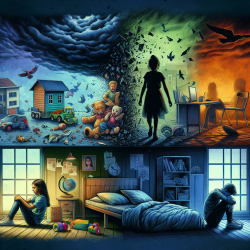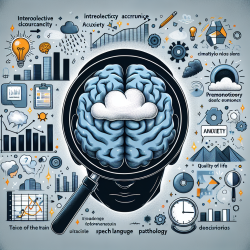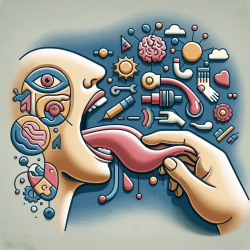Introduction
Adolescence is a pivotal developmental stage marked by increased stress, anxiety, and changes in sleep patterns. The study "Childhood Trauma and Stressful Life Events Are Independently Associated with Sleep Disturbances in Adolescents" highlights the independent effects of childhood trauma and stressful life events on adolescent sleep patterns, even when accounting for anxiety and depression.
Key Findings from the Study
The research involved 752 adolescents aged 12-15, who completed self-report questionnaires about childhood trauma, stressful life events, anxiety, and depression. The study identified four key sleep factors: movement during sleep, sleep regularity, sleep disturbances, and sleep pressure. Both childhood trauma and recent stressful life events were significantly associated with sleep disturbances, even after controlling for anxiety and depression.
Implications for Practitioners
For practitioners working with adolescents, understanding the impact of childhood trauma and stressful life events on sleep is crucial. Here are some actionable insights:
- Screening and Assessment: Incorporate assessments for childhood trauma and stressful life events into routine evaluations. Use validated tools like the Childhood Trauma Questionnaire (CTQ) and the Stressful Life Events Schedule (SLES) to identify adolescents at risk.
- Holistic Approach: Address sleep disturbances by considering the broader context of the adolescent's life, including mental health, family dynamics, and social stressors.
- Intervention Strategies: Develop interventions that target both sleep disturbances and underlying trauma. Cognitive-behavioral therapy (CBT) for insomnia, combined with trauma-focused therapy, can be effective.
- Collaboration: Work with families, schools, and mental health professionals to create a supportive environment that addresses the multifaceted needs of adolescents.
Encouraging Further Research
While this study provides valuable insights, further research is needed to explore the complex relationships between stress, anxiety, depression, and sleep. Future studies should focus on objective measures of sleep and stress, as well as the neurobiological pathways involved. Understanding these connections can lead to more effective interventions and better outcomes for adolescents.
Conclusion
Childhood trauma and stressful life events significantly impact adolescent sleep patterns, independent of anxiety and depression. Practitioners should incorporate these findings into their practice to improve outcomes for adolescents. By addressing the root causes of sleep disturbances, we can better support the mental health and well-being of young people.
To read the original research paper, please follow this link: Childhood Trauma and Stressful Life Events Are Independently Associated with Sleep Disturbances in Adolescents.










